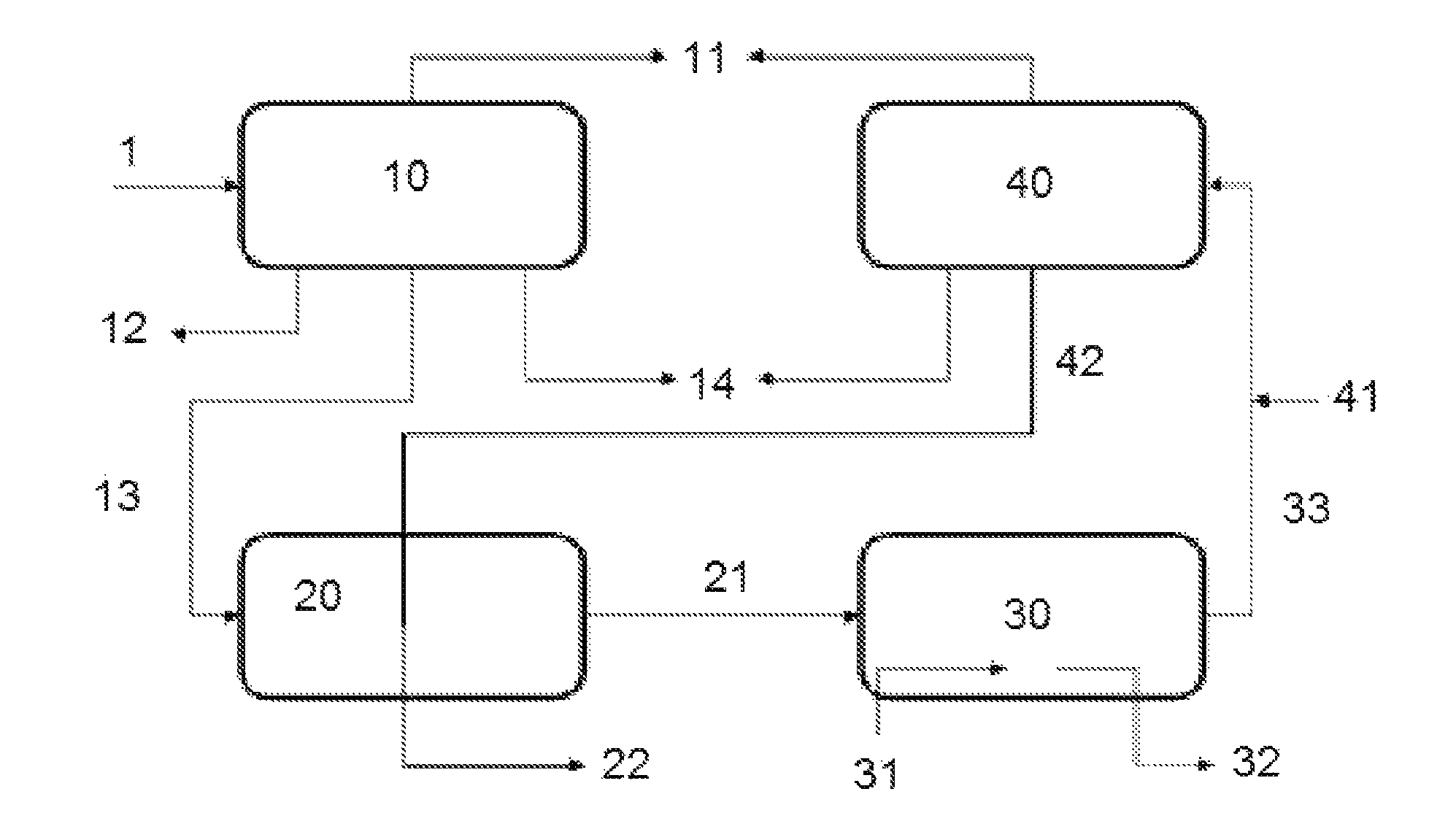Process, method, and system for removing heavy metals from fluids
a heavy metal and fluid technology, applied in the field of heavy metal removal process, method and system, can solve the problems of not being well addressed, crude oil adsorption technology does not work well, and condensates with low mercury levels, and achieve the effect of reducing mercury concentration
- Summary
- Abstract
- Description
- Claims
- Application Information
AI Technical Summary
Problems solved by technology
Method used
Image
Examples
example 1
[0099]In this example, a sample of volatile Hg0 in simulated crude was prepared. First, five grams of elemental mercury Hg0 was placed in an impinger at 100° C. and 0.625 SCF / min of nitrogen gas was passed over through the impinger to form an Hg-saturated nitrogen gas stream. This gas stream was then bubbled through 3123 pounds of Supurla® white oil held at 60-70° C. in an agitated vessel. The operation continued for 55 hours until the mercury level in the white oil reached 500 ppbw by a Lumex™ analyzer. The simulated material was drummed and stored.
example 2
[0100]The Example illustrates the stripping of volatile Hg0 from a crude. First, 75 ml of the simulated crude from Example 1 was placed in a 100 ml graduated cylinder and sparged with 300 ml / min of nitrogen at room temperature. The simulated crude had been stored for an extended period of time, e.g., months or days, and its initial value of mercury had decreased to about 369 ppbw due to vaporization (at time 0). The mercury in this simulated crude was rapidly stripped consistent with the known behavior of Hg0, as shown in Table 1. The effective level of mercury at 60 minutes is essentially 0 as the detection limit of the Lumex™ analyzer is about 50 ppbw.
[0101]
TABLE 1Time, minMercury, ppbw 03691027420216301634099505660738044100 38120 11140 25Pct Volatile Hg80
examples 3-5
[0102]Various samples of crudes from different sources were obtained, analyzed for particulate mercury using the modified BS&W test, and studied in the stripping test. In contrast to the simulated crude which used Hg0, the mercury in these crudes is predominantly non-volatile and contains Hg particles. Crudes 1 & 2 had pour points above room temperature and were stripped at 60° C. Crude 3 was fluid at room temperature and was stripped at room temperature. Table 2 shows the results of the analyses.
[0103]
TABLE 2Example 3Example 4Example 5Crude 1Crude 2Crude 334% particulate91% particulate76% particulateHgHgHg60° C.60° C.AmbientTime,Hg,Time,Hg,Time,Hg,minppbwminppbwminppbw 0444 06130 0336110397106172103334204072058792033293040530665330353940432406255403303504275068865037106039860642060353980413806626——100 460————120 427140 427————160 419————180 481————Volatile10Volatile0Volatile0Hg %Hg %Hg %
PUM
| Property | Measurement | Unit |
|---|---|---|
| temperature | aaaaa | aaaaa |
| temperature | aaaaa | aaaaa |
| pour point | aaaaa | aaaaa |
Abstract
Description
Claims
Application Information
 Login to View More
Login to View More - R&D
- Intellectual Property
- Life Sciences
- Materials
- Tech Scout
- Unparalleled Data Quality
- Higher Quality Content
- 60% Fewer Hallucinations
Browse by: Latest US Patents, China's latest patents, Technical Efficacy Thesaurus, Application Domain, Technology Topic, Popular Technical Reports.
© 2025 PatSnap. All rights reserved.Legal|Privacy policy|Modern Slavery Act Transparency Statement|Sitemap|About US| Contact US: help@patsnap.com


